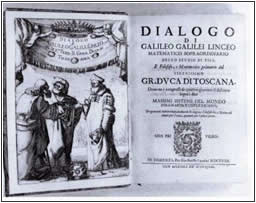
You are here: Home >> History of Light >> Galileo >> Galileo and Light
In his book "Dialogues Concerning Two New Sciences", Galileo, the teacher, talks with his students about the speed of light. Let's see their dialogue:
 Sagredo: Which is the nature of that speed, the type, how can we measure it? Is it instant or not? Can't we clarify this subject by an experiment?
Sagredo: Which is the nature of that speed, the type, how can we measure it? Is it instant or not? Can't we clarify this subject by an experiment?
Simplicio: The daily experience reveals that it is instant. After the detonation of a canon we can see the shine immediately, while the bang comes to our ears obviously after a while.
Sagredo: Therefore, Simplicio, from what you say, I can only conclude light travels with a speed greater than the speed of sound and nobody knows if it is really instant.
Salviati: We could clarify this, if there was a method that would allow us to certify this. And I really cab imagine such a method.
Then Salviati explains this method: If we consider that the speed of light is not only finite, but also small enough, we could slow it down, as we slow down the movement of a film. Galileo finds the idea interesting and tries to make it real.
Two people, A and B stay on two hilltops. Each one holds a lantern. B turns his lantern on when he conceives the light beam of A. If the hilltops cover a distance of one mile and light has a speed of one mile per second, let us see what will happen.
A turns his lantern on. B conceives the signal after one second and instantly turns his own lantern on. A consequently, accepts this signal two seconds after he had sent his own signal. That is to say, if A does not know the speed of light and because B is one mile away, he might easily think that the speed of light is one mile per second. But this is a mistake.
Why Galileo failed to measure the speed of light